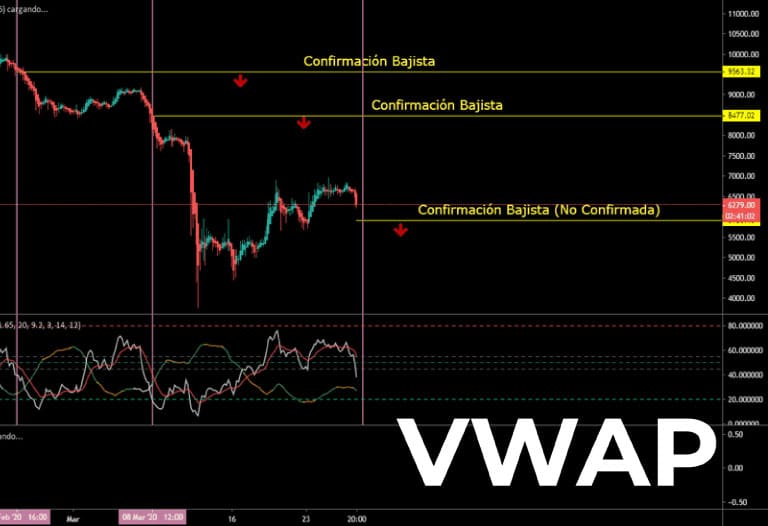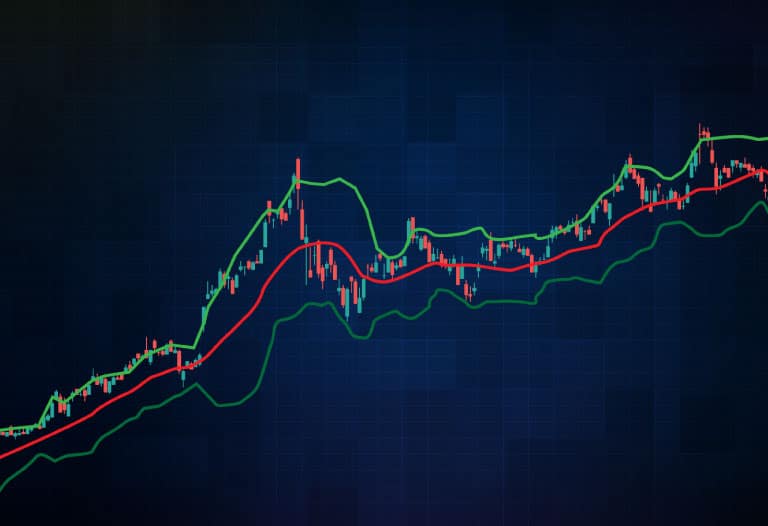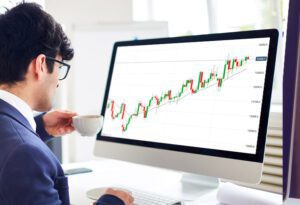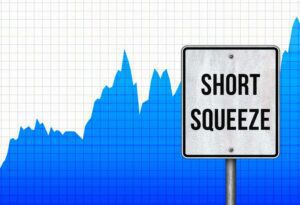
Table of Contents
ToggleAfter having survived for a considerable time in the fierce cryptocurrency market, we have incorporated, in a quasi-automatic way, concepts and tools that strengthen our trading strategies. The volume weighted average price, not only turns out to be one of them, but it is essential to include it in our list of most useful tools.
It is already undoubtedly, at this point, that volume is one of the great indicators that traders often use when analyzing the market and, based on it, determine their next moves.
The volume-weighted average price is a simple but extremely practical indicator. It is constructed based on a combination of volume and price action. Its uses range from trend confirmation to identifying buy and sell points.
Today it’s my turn to tell you everything you need to know about this interesting and practical indicator. Let’s get to it!
Defining the volume-weighted average price
Once again, we are faced with a name or identifier that reveals most of the information we need to understand the concept under study. As the name that identifies it anticipates, this indicator is composed of the average price of an asset, in a given period of time, weighted according to the volume of the asset during that period.
On our way through the world of trading, we will meet those who will tell us:
- The most important thing, or the only thing that matters, is price action!
Meanwhile, from another side, they will refute us:
- Volume, that most important indicator ever!
Now, we are faced with an indicator that combines both concepts, the average price of an asset weighted by the volume it has had during the same period of time.
Clarification before continuing with the topic: weighting is a word that comes to us as a Latin adpatation ponderatio, which leads us to conclude that weighting is the weight or relevance that something has. In this case, by weighting the price with the volume, we note how much importance the latter has had on the movements of the former.
It is for these reasons that the VWAP, defined by its acronym in English, is such an important indicator, with great adoption or use and essential to detect, among others:
- Changes in trend
- Liquidity areas to pay attention to
How to calculate the volume weighted price?
This indicator, being one of the most important, widespread and renowned indicators, is present in the vast majority of the platforms most used by traders. By simply selecting the VWAP indicator, you will find a line, similar to a moving average, which follows the price of the asset in question.
However, it is interesting to know the method by which this line is obtained.
The formula
To calculate the volume-weighted average price, we must first know the volume traded in each transaction. We will get this by multiplying the price by the volume of each transaction and dividing the result by the total volume.
This VWAP formula looks as follows:
- VWAP = ∑ (Typical Price * Volume) / ∑ Volume
Explanation
You may have noticed that we have added a new concept. Let’s see now what the typical price is all about. This is obtained by adding the maximum price with the minimum price, plus the subsequent addition of the closing price and divide this result by three. After these operations, we will obtain the typical price.
Of course, when we talk about the high, low and close, we refer to the price of the asset in the period of time we are analyzing.
In this simple way, we can calculate the volume-weighted average price of an asset. Now, you may be thinking, “Yeah, great. But we get a number and we see a line.” If you’ve thought about it, you’re right.
The line we see on the chart is the sum of different time frames, which you haven’t delivered the price of each chosen time frame. The combination of a large number of them, gives us as a result this line that will help us to:
- Identify trends
- Detect areas of high, or even low, liquidity

How to trade according to the volume-weighted average price?
This indicator has its benefits, I have already highlighted them from the beginning, however, they do not take away its negative points. Let’s review first, the repairs that we must take into account about this indicator, and then know some strategies that traders usually carry out trading based on the VWAP.
Details to take into account when trading on the basis of volume weighted average price
This powerful indicator has contraindications or warnings that we must consider when using it in our daily operations. Let us analyze each one of them, so as not to lose sight of its limitations.
Its status as a “lagging” indicator and not a predictive one
In these characteristics, the volume-weighted average price indicator meets other famous trading tools such as moving averages.
Both indicators are created from pre-existing data, therefore:
- Lack predictive qualities
- They are known as “stragglers”.
The level of “lag” of an indicator will be related to the amount of data it has. The greater the amount of data, which is equal to greater temporality, the slower will be the response of the indicator to new events.
This is easy to imagine, since being indicators of average position, the more data have been taken into consideration, the greater amplitude the next movement will need to cause a considerable modification in this average.
Its time limitation
In relation to the previous characteristic, we find that, for the most part, traders use the volume-weighted average price indicator on a daily timeframe.
Its complementary nature
This is a consideration that is far from being exclusive to the volume-weighted average price indicator. Undoubtedly, it is a transversal mention to all the tools, indicators and instruments used by traders when trading. Never one of them should be used and blindly trust our movements.
As to give clarity, let’s take a small example. Next, we will see how some traders consider that an asset is below its real valuation when its price moves below the volume-weighted average price line.
In any case, if we are in a market with a strong upward trend, a price below the VWAP line may not be seen for a long time. It is for example of the style, that from this blog, we constantly insist that the tools have been created to be combined and none of them represents “the holy grail of trading“.
Some strategies trading on the basis of the volume weighted average price indicator
Let’s review the different utilities that this indicator provides to traders.
Buy and sell signals
There are many traders who use the following situations as signals in this sense:
- When using the price crossing the VWAP line upwards, it is seen as an opportunity to enter “long”.
- If the opposite situation occurs, and the price falls below the volume weighted average price line, it may be time to open a “short” position.
Trend identifier
In line with the usual use of moving averages, the VWAP line can play an important role in identifying market trends.
When we find a price above the VWAP line, we can be in a bull market. Otherwise, if we find the price below this volume-weighted line, the market could be in a downtrend.
Identification of liquidity zones
This is usually the way in which the big traders, the infamous whales of the market, use this indicator. Highly liquid areas can determine exit points for large positions without having a major impact on the price of the asset in question.
Efficiency measure of an operation
With this example, perhaps the idea of “lagging indicator” will become a little clearer. A common practice in the traders’ circle is to review the efficiency of their own operations. In this way, conclusions can be drawn about one’s own actions, which contribute to future planning.
Here, the volume-weighted average price could be used for the following analysis:
- Any purchase order executed below the VWAP line is considered effective.
- Meanwhile, executed buy orders, above the VWAP line, would be failed trades.
It is evident that by inverting the sentences and replacing the word “buy” with “sell”, we will obtain an analysis of the efficiency of our sales. Once again, the volume-weighted average price gives us a guideline about the past. In any case, used well, the past is a strong tool to avoid old mistakes or bad habits in the future.
Long-term investments
Notwithstanding the caveats as to which time frame is most friendly to the use of the VWAP, those who trade on a long-term basis can make use of it.
In these cases, the volume-weighted average price is often used as a reference to analyze the current state of the market. We return to the example where this indicator was used as a measure for entering or exiting positions. A plausible long-term strategy would be to buy assets whose price is below their volume-weighted average price.

Conclusion and closing
Once again, the conclusion of an article in this blog brings us back to a place where caution and reflection prevail over all its rivals when it comes to making our next trades. The list of tools, indicators and concepts that we incorporate during our adventure through this metaverse continues to grow by leaps and bounds.
It is important not to lose sight of the fact that none of these instruments is endowed with magical conditions. We cannot forget that even in trading, unity is strength. By combining as many of the available tools as possible, our research will lead us to make decisions whose foundations have an even greater empirical contrast, and the results will be even closer to our desires.
The recipe for success has not changed. Let’s continue to incorporate knowledge and consciously put it into practice.








